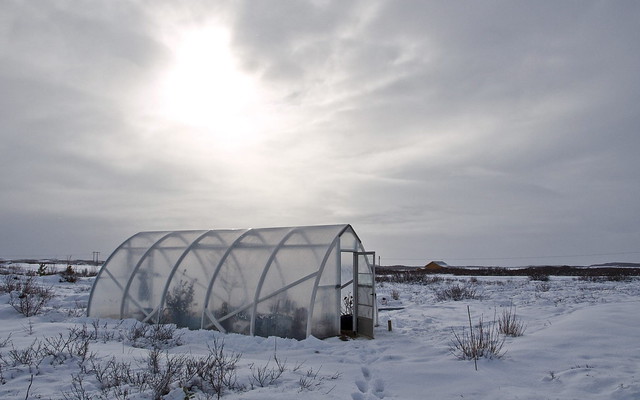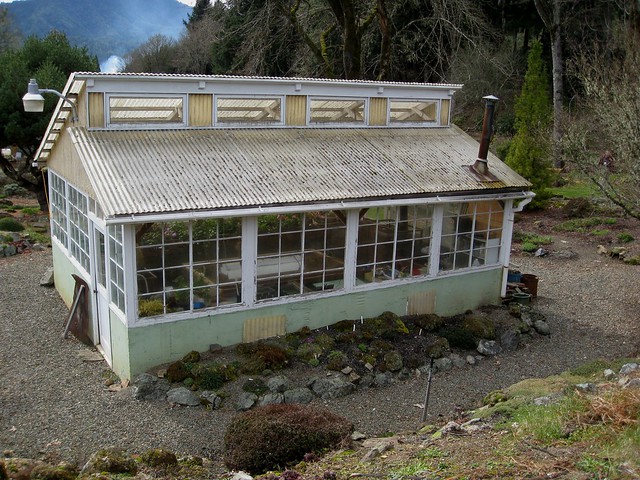I did about 6 months worth of researching before I settled on a system/design that I felt would work best for me. I want a system that I could use year round. I live in the Great Northwest (Oregon) and knew that I would have to use a greenhouse in order to grow during the winters. I was able to find lots of free info online about building greenhouses.
 |
| Photo by United Soybean Board / CC by |
There is a lot to consider when building a greenhouse. You need to choose a location, size, building material, purpose, foundation, longevity, cost, and type. Here are a couple of resources that I used;
Building a Greenouse
Sundance Design Guide
Greenhouses for Homeowners and Gardners
Youtube search how to build a greenhouse
There were other sources that I used, but these were the most helpful to me.
Here is a very condensed and simplified version of every thing I learned about greenhouses.
Longevity, Purpose and Cost
These three parameters affect the rest. How long do you want to use the greenhouse for? Will it be used all year round, just to overwinter a few plants, or to get an early start on the growing season? It can be free bu using recycled materials or several thousand dollars for a fancy kit and a contrator to install.
 |
| Photo by V31S70 / CC by |
Types
The type of greenhouse you use depends upon where it is going. If you want to use an existing structure as a support then consider a lean-to or solar lean-to style. Or if it will be placed out by it self, consider a gable, quonset, a frame, hoop house, or a pit style.
Each one has its own advantage and disadvantages. I suggest you read the links provided above as they give in depth details.
Size
This mostly depends on what you want to get out of your greenhouse. Are you planting starts, feeding a family or perhaps a community? Some styles of greenhouses are easier to make additions to later if you wish to expand.
 |
| Photo by francois / CC by |
Building Material
There are tons of options here. The frame material could be plastic, wood, or metal. But it is not quite that simple. You have types of metal, wood and plastic. PVC would be a good option for a hoop house, it cannot hold too much weight though. If you are worried about wood rot, consider useing cedar, cypress, or redwood. Metals are the strongest, but to prevent rust use galvanized steel, or paint the metal with some sort of protection (rust-oleum)
The glazing material can be from glass, polycarbonate sheets (hard plastic), or the thin 4mm plastic stuff. Glass is hands down the best material. It is also the most expensive and lasts the longest. Most polycarbonate sheets have a ten year warranty from UV protection. The poly sheets will yellow from the sun and will not let as much light it. The cheapest option is the thin plastic that will lay over the frame (usually it is used with hoop houses). This will need to be replaced more frequently than the other options.
Foundation
when you walk into your greenhouse what do you want to be standing on? Would you be ok with dirt, grass clippings for the walkways, crushed rock, pebbles, brick, stone, or concrete. Each has an associated cost, look, and structural foundation support. If you are doing raised garden beds and it is a permanent sturcture, perhaps laying concrete would be a good idea.
Other Considerations
Will you need water or electricity? The air in the greenhouse will need to cycle. There are passive designs for ventilation that can minimize the use of needed cooling and heating. You may need a fan to help the air move. If you are using in the winter you can add heat to the green house with rocket stoves, space heaters, thermal mass, and a bunch of other ways.
There are a lot of options to consider. I do not think that there is a one right answer for greenhouse design. Do your research and find out what will work best for your climate and needs.
 |
| Photo by Axel Kristinsson / CC By |
Foundation
when you walk into your greenhouse what do you want to be standing on? Would you be ok with dirt, grass clippings for the walkways, crushed rock, pebbles, brick, stone, or concrete. Each has an associated cost, look, and structural foundation support. If you are doing raised garden beds and it is a permanent sturcture, perhaps laying concrete would be a good idea.
Other Considerations
Will you need water or electricity? The air in the greenhouse will need to cycle. There are passive designs for ventilation that can minimize the use of needed cooling and heating. You may need a fan to help the air move. If you are using in the winter you can add heat to the green house with rocket stoves, space heaters, thermal mass, and a bunch of other ways.
 |
| Photo by brewbooks / CC by |
There are a lot of options to consider. I do not think that there is a one right answer for greenhouse design. Do your research and find out what will work best for your climate and needs.
No comments:
Post a Comment